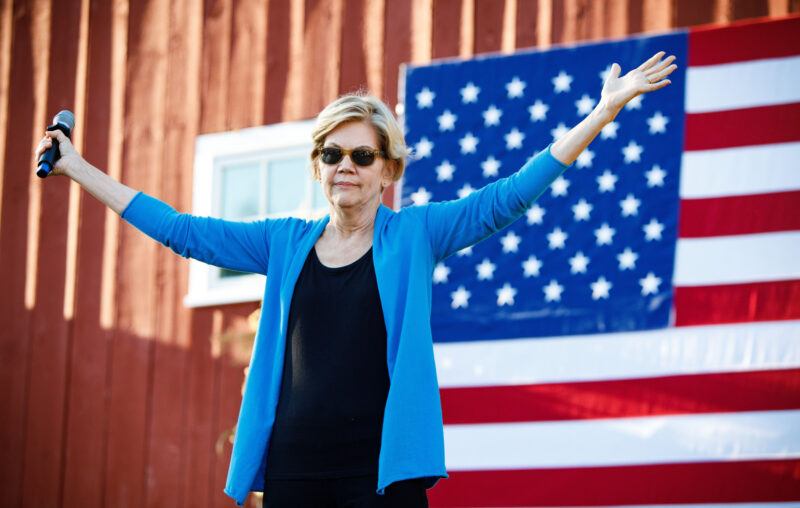Schrodinger’s Demand Curve: Elastic or Inelastic?

Economists have almost universally rejected price controls after their disastrous effects in the 1970s. Because waste and shortage almost invariably follow from their application, price controls have lost serious academic interest. This condemnation has one partial exception, however: the minimum wage.
Like any other price floor, the minimum wage prohibits firms from paying less than a mandated amount for labor. The predicted effect is a surplus in the labor market, meaning that there are more workers than jobs available, or in other words, higher unemployment. At least, that was the mainstream view until the work of Alan Krueger and David Card fractured that consensus in 1993. Their results contradicted the standard theoretical model, as they found no effect on unemployment from an increase in the minimum wage.
Although the literature is still overwhelmingly negative, left-wing politicians have seized on Krueger and Card’s findings to justify mandatory wage hikes. For example, Elizabeth Warren has claimed that “big corporate money” is the only explanation for why Congress has not raised the minimum wage to $15 an hour. Apparently, Warren believes studies like Card and Krueger’s repudiate the nearly 75 percent of economists who still oppose that policy. Even Nobel laureate Paul Krugman has cited their research to maintain that there is “just no evidence that raising the minimum wage costs jobs.”
In one of his presidential debates, President Biden argued that “there is no evidence that when you raise the minimum wage, businesses go out of business.” Biden’s claim is especially strange, as the businesses will presumably bear the cost of the policy, if not the workers.
Economists Bryan Caplan and Tyler Cowen have pointed out an even deeper contradiction in the left’s position. If the price of a given good increases, consumers almost invariably cut down on consumption. But the degree to which they do so depends on how many substitutes are available. For instance, a diabetic is highly dependent on insulin, as there are virtually no alternatives for treatment. If the price of insulin rises substantially, he will have no choice but to bear that cost. In economic terms, his demand is inelastic, while by contrast, the demand for luxury goods is elastic. Supporters of the minimum wage appear to implicitly assume that the demand for labor is inelastic, so that a mandated increase in the price of labor will not cause a substantial decrease in the number of laborers demanded. Instead, the cost will necessarily be borne by employers.
The contradiction for left-wing politicians and policy makers is that, just as they endorse a higher minimum wage, they also support increased immigration. Elizabeth Warren’s presidential campaign, for example, reprimanded Donald Trump for having “championed dramatic cuts to legal immigration.” On the other hand, Warren promised to raise the number of accepted refugees from “just over 22,000” to “175,000 refugees per year.” But the underlying economic assumption of this policy is mutually exclusive with support for the minimum wage. If demand curves for labor are inelastic enough to circumvent its effects, increased immigration will hurt native born workers. Why?
A quintessential example of inelasticity is land, as there is only so much of it in a given location. This is a commonly lamented phenomenon in major cities, where an increase in population drives up rents. Similarly, if demand for labor is inelastic, employers must have fewer alternative methods of organizing production. As a result, the number of potential jobs is limited. Under those conditions, what would result from an influx of immigrants? Wages would fall significantly, as there would be an increase in pressure on workers competing for a limited number of jobs, just as tenants compete to live in a fixed amount of space. Conversely, if labor demand is elastic, the number of potential jobs is flexible. Employers would adjust to the inflow of laborers with new opportunities, alleviating the competitive pressure on labor.
The conditions under which a price floor would cause minimal harm to workers are the same as those in which immigration would harm them, making progressive policy self-contradictory. Moreover, in light of literature on the subject (including by David Card himself), immigration does not appear to reduce wages. That result further buttresses the evidence against the minimum wage, by providing empirical support for the elasticity of labor demand. Other possible models have been suggested to defend the policy, such as corporate monopsony power, but these have not held up under scrutiny either. Given this, Elizabeth Warren may be right that immigration has been a “vital source of American strength.” But if so, minimum wage hikes only serve to undermine that vitality.










